The Best Cherry Varieties to Grow in Your Garden
Published: August 22, 2025 at 9:11:49 AM UTC
Growing your own cherry trees offers a delightful combination of ornamental beauty and delicious harvests. From the spectacular spring blossoms to the sweet summer fruits, cherry trees reward gardeners with multiple seasons of enjoyment. Whether you have a spacious yard or a modest garden plot, there's likely a cherry variety that will thrive in your space. This guide will help you navigate the many options and select the best cherry varieties to grow in your garden based on your climate, space, and taste preferences.

Key Factors for Choosing the Best Cherry Varieties
Before diving into specific varieties, it's important to understand the key factors that will determine which cherry trees will thrive in your garden. Making the right choice from the start will save you time, effort, and potential disappointment.
Climate Suitability and Hardiness Zones
Cherry trees have specific climate requirements to produce fruit successfully. Sweet cherries (Prunus avium) generally thrive in USDA zones 5-8, while tart cherries (Prunus cerasus) can handle colder temperatures in zones 4-7. Both types require a certain number of "chill hours" (time spent below 45°F) during winter to set fruit properly.
Pollination Requirements
Understanding pollination needs is crucial when selecting cherry varieties. Many sweet cherries require cross-pollination from a compatible variety to produce fruit, meaning you'll need to plant at least two different compatible varieties. However, there are excellent self-pollinating cherries available that can produce fruit without a partner tree, making them ideal for smaller gardens.
Space and Tree Size
Cherry trees come in various sizes, from standard (reaching 25-30 feet tall) to semi-dwarf (15-20 feet) and dwarf varieties (8-12 feet). The size is primarily determined by the rootstock onto which the variety is grafted. Dwarf cherry trees are perfect for smaller gardens and can even be grown in large containers on patios.
Fruit Type and Flavor Preferences
Cherry varieties fall into two main categories: sweet cherries for fresh eating and tart (sour) cherries primarily used for cooking and baking. Sweet cherries tend to be larger with a rich, sweet flavor, while tart cherries have a bright, acidic profile that makes them perfect for pies, preserves, and juices. Your intended use will guide which type to choose.
8 Best Cherry Varieties to Grow in Your Garden
After extensive research and consultation with horticultural experts, we've identified the top cherry varieties that offer excellent flavor, good disease resistance, and reliable production for home gardeners. Each variety has been selected for its outstanding qualities and adaptability to different growing conditions.
1. Bing Cherry
Hardiness Zones: 5-8
Tree Size: 18-25 feet (standard); 12-15 feet (semi-dwarf)
Pollination: Requires cross-pollination
Flavor Profile: Sweet, rich, and juicy with firm flesh
Bing is the classic sweet cherry variety and remains one of the most popular for good reason. These large, heart-shaped fruits develop a deep mahogany-red color when fully ripe and offer exceptional flavor. The trees are productive and relatively vigorous, though they do require another compatible sweet cherry variety nearby for pollination. Black Tartarian, Van, and Stella are excellent pollinators for Bing.
Bing cherries are perfect for fresh eating but also hold up well for preserving and freezing. They typically ripen in mid-June to early July, depending on your climate zone.
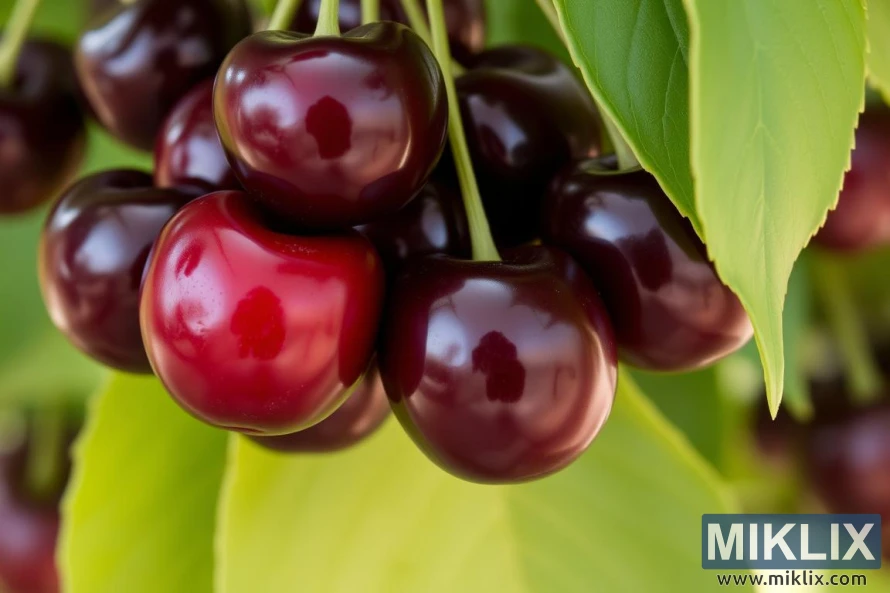
2. Stella Cherry
Hardiness Zones: 5-8
Tree Size: 15-20 feet (standard); 10-14 feet (semi-dwarf)
Pollination: Self-fertile
Flavor Profile: Sweet and rich with good texture
Stella was the first self-fertile sweet cherry variety developed and remains one of the best choices for home gardens. This Canadian-bred cherry produces large, dark red fruits with excellent flavor. Since it's self-pollinating, you only need one tree to get a good harvest, making it ideal for smaller spaces.
Beyond being self-fertile, Stella is also an excellent universal pollinator for other sweet cherry varieties. The tree is moderately vigorous with a spreading habit and typically begins bearing fruit within 3-5 years of planting. Fruits ripen in mid-season, usually late June to early July.

3. Lapins Cherry
Hardiness Zones: 5-9
Tree Size: 15-20 feet (standard); 10-14 feet (semi-dwarf)
Pollination: Self-fertile
Flavor Profile: Sweet, rich flavor similar to Bing
Lapins is another excellent self-fertile sweet cherry variety developed in Canada. Often described as a self-fertile version of Bing, it produces large, firm fruits with dark mahogany-red skin and sweet, juicy flesh. The tree is vigorous with an upright growth habit and shows good resistance to cracking, a common problem with cherries during rainy periods.
This variety is particularly valuable for gardeners in warmer climates as it has lower chill hour requirements (about 400 hours) compared to many other sweet cherries. Lapins typically ripens in late June to early July, about 10 days after Bing.
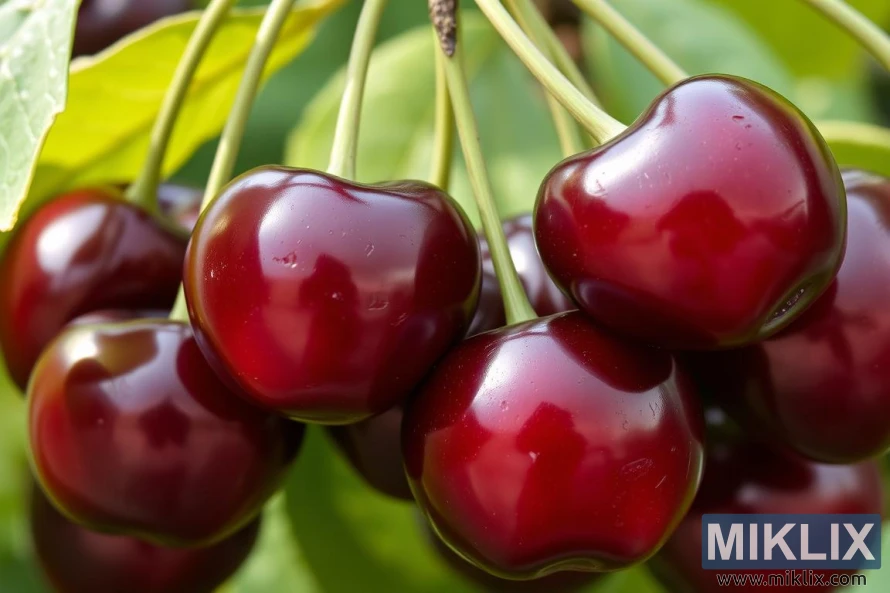
4. Montmorency Cherry
Hardiness Zones: 4-7
Tree Size: 15-20 feet (standard); 10-12 feet (dwarf)
Pollination: Self-fertile
Flavor Profile: Bright, tart flavor perfect for baking and preserves
Montmorency is the gold standard of tart cherries, prized for its bright red fruits with clear juice and classic sour cherry flavor. This self-fertile variety is exceptionally cold-hardy and disease-resistant, making it one of the easiest cherries to grow in home gardens. The trees are naturally smaller than sweet cherry varieties and begin bearing fruit at a younger age, often within 2-3 years of planting.
While too tart for most people to enjoy fresh, Montmorency cherries are perfect for pies, preserves, juices, and drying. They're also rich in antioxidants and have been studied for their potential health benefits, including reducing inflammation and improving sleep quality due to their natural melatonin content.
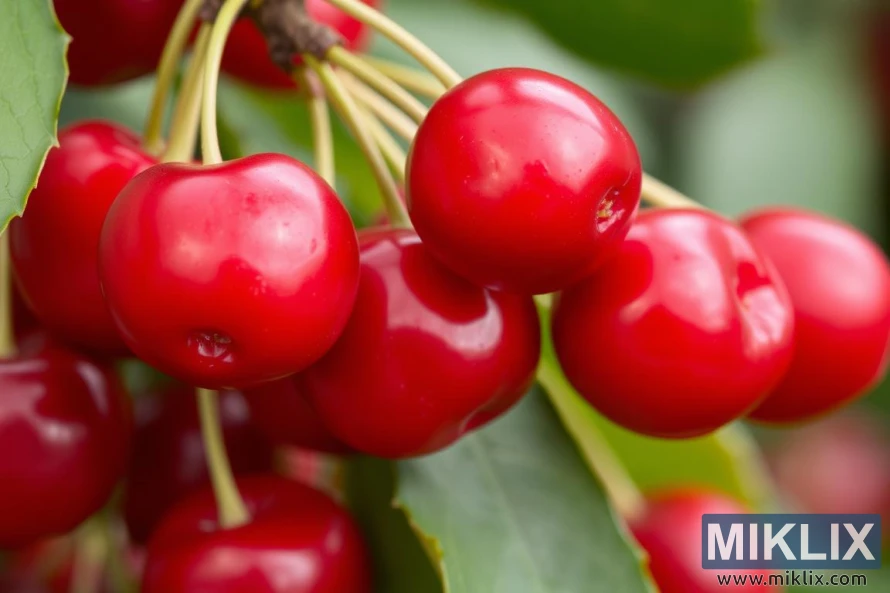
5. Black Tartarian Cherry
Hardiness Zones: 5-8
Tree Size: 20-30 feet (standard); 15-18 feet (semi-dwarf)
Pollination: Requires cross-pollination
Flavor Profile: Rich, sweet, and aromatic with soft flesh
Black Tartarian is an heirloom variety dating back to the early 1800s, beloved for its exceptionally sweet, juicy fruits with a distinctive flavor. The cherries are medium-sized with a deep purplish-black color when fully ripe. While the fruits are softer than modern varieties like Bing, many cherry enthusiasts consider their rich, complex flavor unmatched.
This variety is an excellent pollinator for other sweet cherries and is one of the earliest to ripen, typically in late May to early June. The tree is vigorous with an upright growth habit and can be quite large at maturity, though dwarf rootstocks can keep it more manageable for home gardens.

6. Rainier Cherry
Hardiness Zones: 5-9
Tree Size: 18-25 feet (standard); 12-15 feet (semi-dwarf)
Pollination: Requires cross-pollination
Flavor Profile: Exceptionally sweet with low acidity and delicate flavor
Rainier is a premium sweet cherry variety developed at Washington State University by crossing Bing and Van varieties. These large, heart-shaped cherries have distinctive yellow skin with a pink to red blush and creamy yellow flesh. Their exceptionally sweet flavor with low acidity makes them a favorite for fresh eating.
Rainier cherries require another sweet cherry variety for pollination, with Bing, Van, and Black Tartarian being good choices. The trees are moderately vigorous and productive, though the light-colored fruits can be more susceptible to bird damage than darker varieties. On the plus side, the light color makes them less likely to show bruising.
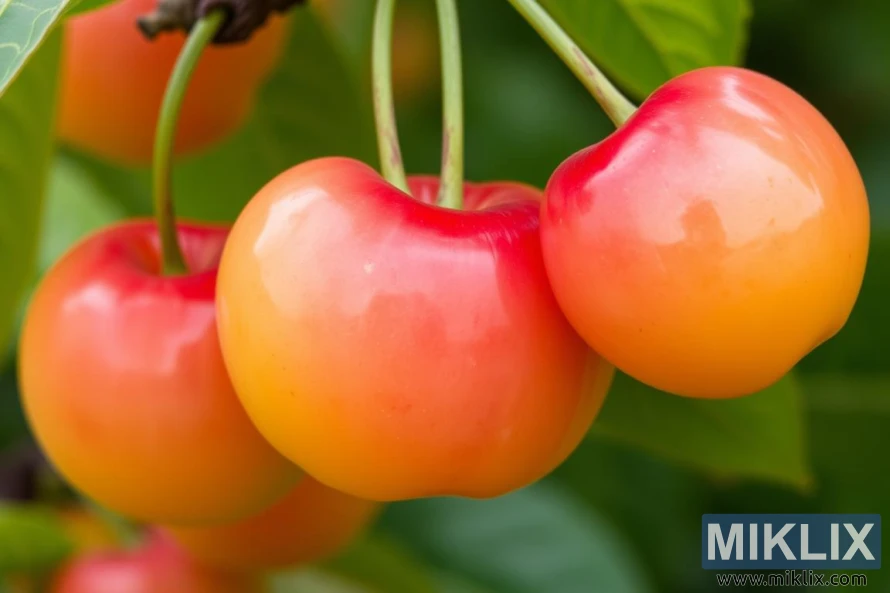
7. North Star Cherry
Hardiness Zones: 4-8
Tree Size: 8-10 feet (naturally dwarf)
Pollination: Self-fertile
Flavor Profile: Bright, tart flavor similar to Montmorency
North Star is an excellent choice for gardeners with limited space who want to grow tart cherries. This naturally dwarf variety typically reaches only 8-10 feet in height and width, making it suitable for small gardens and even large containers. Developed at the University of Minnesota, it's exceptionally cold-hardy and disease-resistant.
The bright red fruits have the classic tart cherry flavor perfect for pies, preserves, and other culinary uses. North Star is self-fertile and typically begins bearing fruit at a young age, often within 2-3 years of planting. It ripens in mid to late July in most regions.
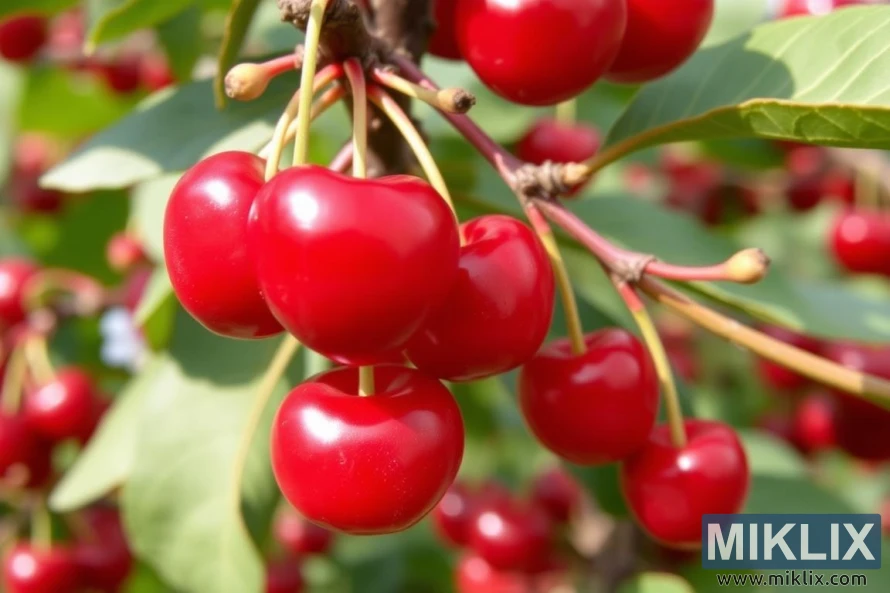
8. Sweet Heart Cherry
Hardiness Zones: 5-8
Tree Size: 15-20 feet (standard); 10-14 feet (semi-dwarf)
Pollination: Self-fertile
Flavor Profile: Sweet and firm with good balance
Sweet Heart is a newer self-fertile variety that extends the cherry season with its late ripening time, typically 2-3 weeks after Bing. The large, bright red fruits are firm and crack-resistant with excellent sweet flavor. This Canadian-bred variety (from the same program that developed Lapins) has quickly become popular with home gardeners for its reliability and quality.
The tree is vigorous with a spreading habit and begins bearing fruit within 3-5 years. As a self-fertile variety, it can produce good crops without a pollinator, though it will also serve as a good pollinator for other late-blooming sweet cherry varieties.
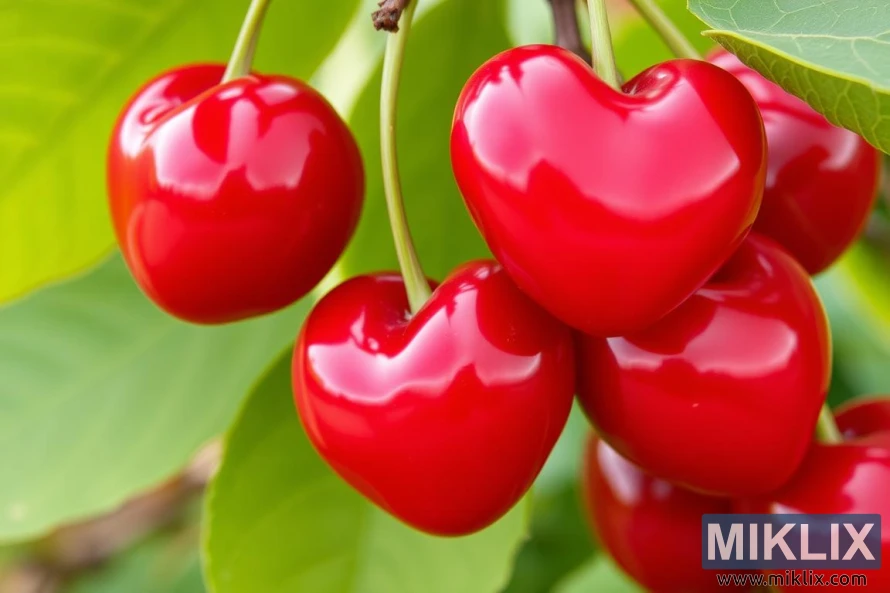
Planting and Care Tips for Cherry Trees
Once you've selected the best cherry varieties for your garden, proper planting and care are essential for success. Here are key guidelines to help your cherry trees thrive:
Planting Location and Soil
Cherry trees require full sun (minimum 6-8 hours of direct sunlight daily) and well-draining soil. They prefer slightly acidic to neutral soil (pH 6.2-6.8) but can adapt to various soil types as long as drainage is good. Poor drainage can lead to root rot and other diseases.
When planting, dig a hole twice as wide as the root ball but no deeper. The graft union (visible swelling on the trunk) should remain 1-2 inches above the soil line after planting. Space standard trees 20-30 feet apart, semi-dwarf 15-20 feet apart, and dwarf varieties 8-12 feet apart.
Watering and Fertilization
Newly planted cherry trees need regular watering during their first year, especially during dry periods. Once established, they typically require about 1 inch of water per week during the growing season. Avoid overhead watering, which can promote fungal diseases.
For fertilization, wait until the tree begins active growth in spring before applying a balanced fruit tree fertilizer. Young trees benefit from a low-nitrogen formula (such as 5-10-10) to encourage fruit production rather than excessive vegetative growth. Always follow package directions for application rates.
Pruning and Training
Proper pruning is essential for cherry trees to develop a strong structure and produce good fruit. Most cherry trees are pruned to an open center or modified central leader system. The best time to prune is in late winter while the tree is still dormant but before spring growth begins.
For young trees, focus on establishing a good framework of scaffold branches. Remove any branches that grow downward, inward toward the center, or cross other branches. For mature trees, thin out crowded areas to improve air circulation and light penetration, which helps reduce disease problems and improves fruit quality.
Pest and Disease Management
Cherry trees can be susceptible to various pests and diseases, including cherry fruit fly, aphids, brown rot, and bacterial canker. A proactive approach to management includes:
- Choosing disease-resistant varieties when possible
- Maintaining good air circulation through proper pruning
- Cleaning up fallen leaves and fruit promptly
- Using appropriate organic or conventional sprays as needed
- Protecting ripening fruit from birds with netting
Many cherry tree problems can be prevented or minimized with good cultural practices, so regular monitoring and maintenance are key to success.
Frequently Asked Questions About Growing Cherry Trees
How long does it take for cherry trees to bear fruit?
Most cherry trees begin bearing fruit within 3-5 years after planting. Dwarf varieties and tart cherries often produce earlier (sometimes in 2-3 years), while standard-sized sweet cherries may take 5-7 years to reach full production. Proper care and maintenance can help trees reach bearing age more quickly.
Can I grow cherry trees in containers?
Yes, dwarf cherry varieties can be successfully grown in containers. Choose a large pot (minimum 18-24 inches in diameter) with good drainage. Use high-quality potting soil mixed with compost, and be prepared to water more frequently than in-ground trees. Dwarf varieties like North Star (tart) and compact sweet cherry varieties on Gisela 5 rootstock are good choices for container growing.
What are the best cold-hardy cherry varieties for northern gardens?
For cold northern regions (zones 4-5), tart cherries generally perform better than sweet varieties. Montmorency and North Star are exceptionally cold-hardy tart cherries. For sweet cherries in colder climates, consider Stella, Black Gold, or White Gold, which have better cold hardiness than many other sweet varieties. Planting on a south-facing slope or near a building can also provide some protection from harsh winter conditions.
How do I protect my cherry harvest from birds?
Birds love cherries as much as we do! The most effective protection is covering trees with bird netting as the fruits begin to ripen. For dwarf trees, this is relatively easy; for larger trees, you may need to focus on protecting the lower branches. Other deterrents include reflective tape, predator decoys, and ultrasonic devices, though these tend to be less effective over time as birds become accustomed to them.
What causes cherry fruits to crack, and how can I prevent it?
Cracking occurs when cherries absorb excess water through their skin after rain, especially when they're close to ripening. To minimize cracking, maintain consistent soil moisture (avoid drought followed by heavy watering) and consider growing crack-resistant varieties like Lapins, Sweet Heart, and Rainier. Some gardeners also use plastic covers to protect ripening fruit from rain.
Conclusion
Growing cherry trees in your garden offers both ornamental beauty and delicious harvests that far surpass store-bought fruit in flavor and freshness. By selecting varieties suited to your climate, space, and taste preferences, you can enjoy success even as a beginning fruit grower.
For small spaces or beginners, self-pollinating varieties like Stella, Lapins, or North Star offer the simplest path to success. Those with room for multiple trees might enjoy the classic excellence of Bing paired with a good pollinator like Black Tartarian. And for culinary enthusiasts, including at least one tart cherry like Montmorency ensures you'll have the perfect fruit for pies, preserves, and other treats.
Whatever varieties you choose, proper planting and care will reward you with years of spring blossoms and summer fruits that make cherry trees among the most beloved additions to any home garden.
Further Reading
If you enjoyed this post, you may also like these suggestions:
- The Best Plum Varieties and Trees to Grow in Your Garden
- The Best Tomato Varieties to Grow in Your Garden
- The Best Strawberry Varieties to Grow in Your Garden
